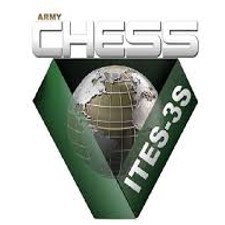Wave 1 | Segment 5
Value Creation is Paramount
Value Creation is Paramount
Mastering the Art of Creating Customer and Business Value
In today's dynamic business environment, the ability to create and deliver value is paramount. For Business Analysts, mid-level and senior managers, staff and associates and other business and IT professionals, understanding the nuances of value creation is not just beneficial - it's essential for driving organizational success and advancing one's career.
Understanding Value Creation
At its core, value creation involves transforming resources - be it time, capital, or technology -into outcomes that meet or exceed the expectations of customers, stakeholders, and employees. It's about identifying and implementing solutions that address real problems, thereby enhancing organizational effectiveness and operational efficiency.
The Dual Focus: Effectiveness and Efficiency
I refer to the concepts of the big "E" (Effectiveness) and the little "e" (efficiency) as the twin pillars of value creation.
- Effectiveness (Big "E"): This pertains to delivering products or services that provide substantial value to customers. It encompasses factors like quality, customer satisfaction, timely delivery, and innovation. The more effectively an organization meets customer needs, the more it can justify premium pricing, thereby enhancing revenue.
- Efficiency (Little "e"): Once effectiveness parameters are set, efficiency focuses on delivering these outcomes in the most economical manner. This involves minimizing waste, optimizing processes, reducing errors, and leveraging technology to lower operational costs.
|
Important Note: Operational efficiency and indiscriminate cost cutting are very different concepts. Please see my blog post Cost Optimization vs. Cost Cutting: The distinction is crucial! |
The synergy between effectiveness and efficiency can be encapsulated in the formula:
Company Value = Price (derived from Effectiveness) - Cost (managed through Efficiency)
Spotlight Case Studies
- Apple's Ecosystem Approach
Apple's seamless integration of its products and services—from iPhones to iCloud—is a prime example of value creation. By focusing on user experience and maintaining high standards of design and functionality, Apple not only meets but often exceeds customer expectations. This approach has cemented their reputation and loyalty among customers - translating into sustained financial success.
- Starbucks' Value Chain Optimization
Starbucks has meticulously analyzed and optimized its value chain to enhance customer experience. By sourcing high-quality coffee beans, investing in employee training, and creating inviting store atmospheres, Starbucks delivers consistent value to its customers. This comprehensive approach has solidified its position as a global leader in the coffee industry.
- Toyota's Lean Manufacturing
Toyota's implementation of lean manufacturing principles showcases a balance between effectiveness and efficiency. By focusing on quality production (effectiveness) and minimizing waste (efficiency), Toyota has set industry standards for automobile manufacturing, resulting in high customer satisfaction and reduced operational costs.
- Netflix's Personalized Content Delivery
Netflix leverages data analytics to understand viewer preferences, enabling personalized content recommendations. This focus on delivering relevant content (effectiveness) while optimizing streaming technology (efficiency) has led to a substantial increase in subscriber base and viewer engagement.
- Amazon's Customer-Centric Innovation
Amazon's commitment to customer satisfaction is evident in its continuous innovation, from one-click shopping to same-day delivery. By effectively addressing customer needs and streamlining logistics, Amazon has become a benchmark for e-commerce excellence.
Strategies to Become a Value Creator
- Define Clear Outcomes:
Begin every project by articulating what success looks like. Establish measurable goals that align with organizational objectives and customer expectations.
- Engage in Continuous Learning:
Stay abreast of industry trends, emerging technologies, and best practices. Enhancing your skill set enables you to contribute innovative solutions that drive value.
- Solicit and Act on Feedback:
Regularly seek input from customers and colleagues. Understanding their perspectives can uncover areas for improvement and innovation.
- Foster Cross-Functional Collaboration:
Work closely with different departments to ensure a holistic approach to problem-solving. Collaborative efforts often lead to more comprehensive and effective solutions.
- Embrace Agile Methodologies:
Adopt agile practices to enhance responsiveness to change. This flexibility allows for iterative improvements and swift adaptation to evolving market demands.
- Utilize Data-Driven Decision Making:
Leverage analytics to inform strategies and measure performance. Data insights can guide resource allocation and highlight opportunities for value creation.
Final Thoughts
In the quest for professional growth and organizational success, mastering the art of value creation is indispensable. By balancing effectiveness with efficiency, continuously seeking improvement, and staying attuned to customer needs, you position yourself as a pivotal contributor to your organization's value proposition.
Embrace these principles to not only enhance your career trajectory but also to drive meaningful impact within your industry. Your focus on value creation positions you as a leader who delivers results. This will get you noticed by senior and executive management. That’s being a Playmaker!
* * * * *
Master of Chaos Newsletter (try it)
Subscribe to my blog | Visit our Knowledge Hub
Visit my YouTube channel | Connect with me on LinkedIn
Check out our Business Analysis Training Courses & Consulting Services

 Login
Login




















